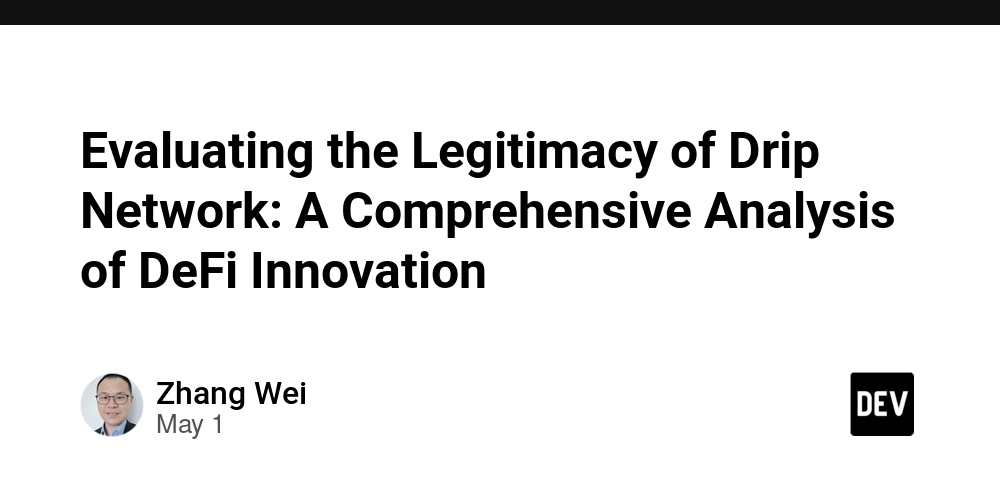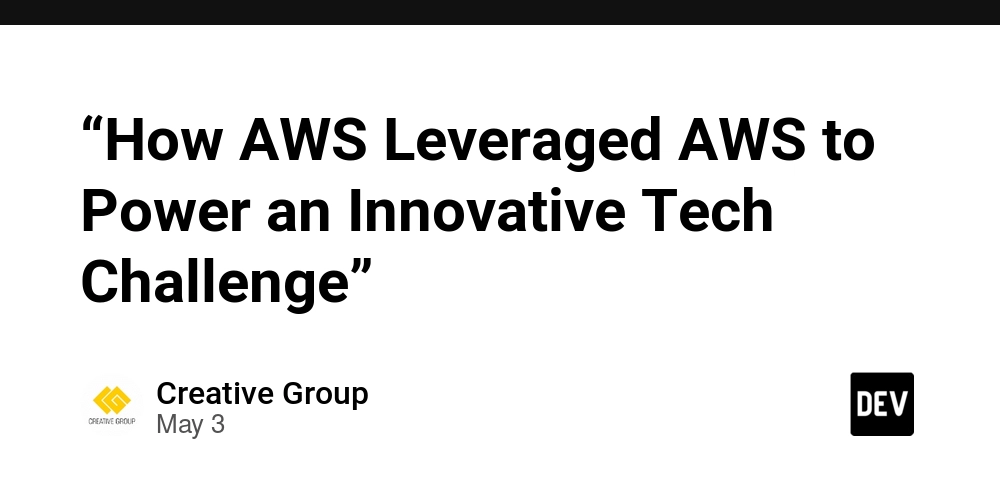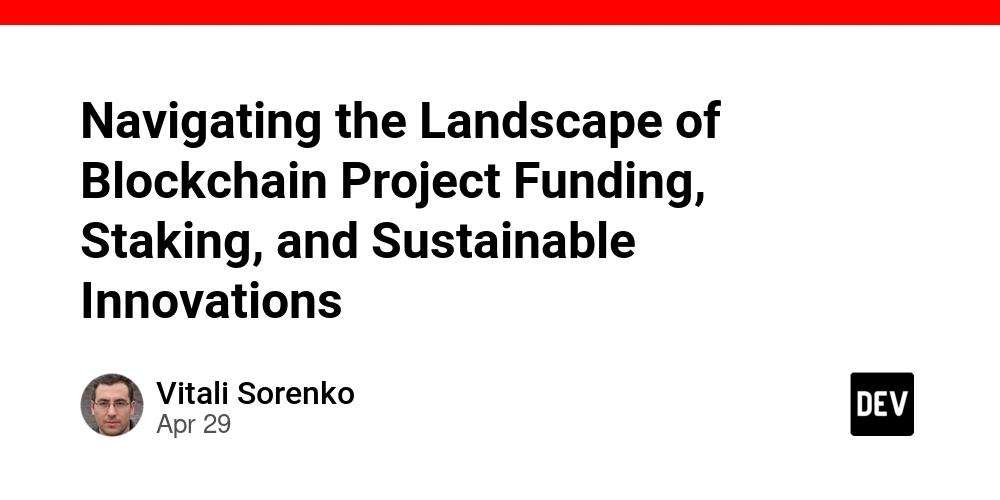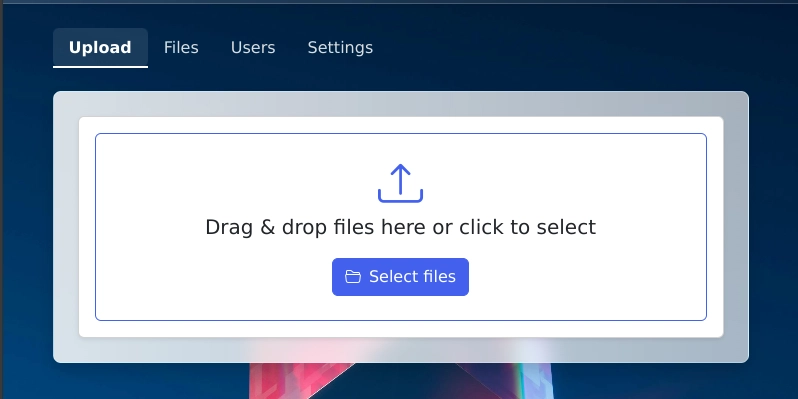Evaluating the Legitimacy of Drip Network: A Comprehensive Analysis of DeFi Innovation
Abstract This post offers an in‐depth analysis of the Drip Network, a cutting‐edge decentralized finance (DeFi) protocol operating on Binance Smart Chain. We discuss its background, core features, community engagement, regulatory challenges, and future trends. Key topics include transparency, technology, security, and sustainable strategies, with practical use cases, tables, and bullet lists to aid readability. In addition, we share links to authoritative sources such as Binance Smart Chain, Drip Network’s community on Twitter, and incisive insights from the dev community. For the original article on this topic, please refer to Evaluating the Legitimacy of Drip Network: A Comprehensive Analysis. Introduction The evolution of decentralized finance has opened many doors for innovative financial systems that bypass traditional intermediaries. Among the emerging projects, Drip Network has captured the attention of investors and blockchain enthusiasts alike. By utilizing the deflationary smart contracts on the Binance Smart Chain and delivering a daily return model, Drip Network continues to push the envelope on DeFi possibilities. With technology intertwining with community-driven governance and robust security protocols, assessing its legitimacy becomes pivotal for future adoption. This post will serve as both a technical exploration and a comprehensive guide for anyone interested in understanding the inner workings, benefits, and challenges of the Drip Network. Background and Context Decentralized finance has radically transformed the way we think about investments and lending. Drip Network operates as one of the many platforms seeking to democratize finance. Let’s examine some of the historical and ecosystem contexts: History: The surge of DeFi in the past few years has given rise to various platforms that aim to bring transparency, user engagement, and robust economic models to digital finance. Drip Network capitalizes on this momentum. Definitions: DeFi: A branch of blockchain technology that eliminates intermediaries in financial transactions. Deflationary Smart Contract: A self-executing contract with a mechanism that reduces token supply over time. Staking: Participating in network operations by locking funds in the protocol to earn rewards. Ecosystem: Drip Network operates over the Binance Smart Chain, recognized for its high transaction throughput and low fees. The project employs a faucet mechanism and a referral system to both incentivize participation and expand its user base. More about blockchain's technical advantages is available in resources like Smart Contracts on Blockchain and Blockchain and Cybersecurity. The ongoing evolution in the regulatory and technological landscape makes it essential to monitor projects like Drip Network, especially when sustainability and innovation intersect. Core Concepts and Features Drip Network introduces several critical features that help define its legitimacy and performance in the crowded DeFi space. Here’s a detailed look at its core concepts: Transparency Transparency is foundational for trust in decentralized projects. Drip Network ensures that key operational updates, smart contract details, and security practices are shared openly via social media and technical forums. However, increased reliance on third-party audits could further reinforce its credibility. Technology and Security Drip Network leverages the power of Binance Smart Chain. Some of its strong points include: Scalability: The BSC infrastructure accommodates rapid transaction processing. Security: With a commitment to the best practices in adopting multi-signature wallets (e.g., Gnosis Safe), the network aims to secure user funds. Smart Contracts: Its deflationary smart contracts are crafted to provide a steady 1% daily return, albeit with challenges regarding long-term sustainability. Below is a table summarizing the technical features and associated security measures: Feature Description Security Mechanism Daily 1% Return Model Deflationary model providing incremental rewards to stakers Transparent smart contract logic Faucet Mechanism Rewards users with periodic DRIP tokens for participation Publicly verifiable blockchain code Referral System Expands the user base by incentivizing referrals Ongoing community monitoring Binance Smart Chain Integration Ensures high throughput and low transaction fees Inherent security features of BSC Community Engagement A driven and interconnected community is a pillar in the DeFi world. Drip Network’s referral system spurs organic growth but also raises questions about sustainability, reminiscent of potential Ponzi-like structures. Investors are encouraged to assess community engagement strategies, with insights available at Community Engagement Strategies. Regulatory Landscape Operating in the nascent and often

Abstract
This post offers an in‐depth analysis of the Drip Network, a cutting‐edge decentralized finance (DeFi) protocol operating on Binance Smart Chain. We discuss its background, core features, community engagement, regulatory challenges, and future trends. Key topics include transparency, technology, security, and sustainable strategies, with practical use cases, tables, and bullet lists to aid readability. In addition, we share links to authoritative sources such as Binance Smart Chain, Drip Network’s community on Twitter, and incisive insights from the dev community. For the original article on this topic, please refer to Evaluating the Legitimacy of Drip Network: A Comprehensive Analysis.
Introduction
The evolution of decentralized finance has opened many doors for innovative financial systems that bypass traditional intermediaries. Among the emerging projects, Drip Network has captured the attention of investors and blockchain enthusiasts alike. By utilizing the deflationary smart contracts on the Binance Smart Chain and delivering a daily return model, Drip Network continues to push the envelope on DeFi possibilities. With technology intertwining with community-driven governance and robust security protocols, assessing its legitimacy becomes pivotal for future adoption.
This post will serve as both a technical exploration and a comprehensive guide for anyone interested in understanding the inner workings, benefits, and challenges of the Drip Network.
Background and Context
Decentralized finance has radically transformed the way we think about investments and lending. Drip Network operates as one of the many platforms seeking to democratize finance. Let’s examine some of the historical and ecosystem contexts:
- History: The surge of DeFi in the past few years has given rise to various platforms that aim to bring transparency, user engagement, and robust economic models to digital finance. Drip Network capitalizes on this momentum.
-
Definitions:
- DeFi: A branch of blockchain technology that eliminates intermediaries in financial transactions.
- Deflationary Smart Contract: A self-executing contract with a mechanism that reduces token supply over time.
- Staking: Participating in network operations by locking funds in the protocol to earn rewards.
- Ecosystem: Drip Network operates over the Binance Smart Chain, recognized for its high transaction throughput and low fees. The project employs a faucet mechanism and a referral system to both incentivize participation and expand its user base. More about blockchain's technical advantages is available in resources like Smart Contracts on Blockchain and Blockchain and Cybersecurity.
The ongoing evolution in the regulatory and technological landscape makes it essential to monitor projects like Drip Network, especially when sustainability and innovation intersect.
Core Concepts and Features
Drip Network introduces several critical features that help define its legitimacy and performance in the crowded DeFi space. Here’s a detailed look at its core concepts:
Transparency
Transparency is foundational for trust in decentralized projects. Drip Network ensures that key operational updates, smart contract details, and security practices are shared openly via social media and technical forums. However, increased reliance on third-party audits could further reinforce its credibility.
Technology and Security
Drip Network leverages the power of Binance Smart Chain. Some of its strong points include:
- Scalability: The BSC infrastructure accommodates rapid transaction processing.
- Security: With a commitment to the best practices in adopting multi-signature wallets (e.g., Gnosis Safe), the network aims to secure user funds.
- Smart Contracts: Its deflationary smart contracts are crafted to provide a steady 1% daily return, albeit with challenges regarding long-term sustainability.
Below is a table summarizing the technical features and associated security measures:
| Feature | Description | Security Mechanism |
|---|---|---|
| Daily 1% Return Model | Deflationary model providing incremental rewards to stakers | Transparent smart contract logic |
| Faucet Mechanism | Rewards users with periodic DRIP tokens for participation | Publicly verifiable blockchain code |
| Referral System | Expands the user base by incentivizing referrals | Ongoing community monitoring |
| Binance Smart Chain Integration | Ensures high throughput and low transaction fees | Inherent security features of BSC |
Community Engagement
A driven and interconnected community is a pillar in the DeFi world. Drip Network’s referral system spurs organic growth but also raises questions about sustainability, reminiscent of potential Ponzi-like structures. Investors are encouraged to assess community engagement strategies, with insights available at Community Engagement Strategies.
Regulatory Landscape
Operating in the nascent and often unpredictable regulatory framework presents a significant challenge. As jurisdictions adapt to new financial paradigms, projects like Drip Network must remain agile. Stakeholders are advised to stay informed on legal trends by consulting resources like Blockchain Regulation.
Applications and Use Cases
Drip Network’s innovative structure offers several practical applications in the DeFi landscape. Here are two pertinent examples that illustrate how the platform might be used:
Income Generation for Passive Investors:
Investors can stake their DRIP tokens to earn a supposed 1% daily return. Such a model appeals to individuals seeking a consistent income stream without actively trading. The faucet mechanism further ensures that new tokens are introduced gradually, creating an additional layer of yield generation.Community-Driven Fundraising Initiatives:
Drip Network’s robust referral system can also be leveraged for decentralized fundraising campaigns. Projects that require seed capital can potentially partner with the network to tap into its engaged community. This aligns with trends in Decentralized Finance for Project Funding.Broadening Financial Accessibility:
By removing traditional intermediaries, Drip Network promises increased financial inclusion. Participants with limited access to conventional banking services might find an opportunity to take control of their finances using such decentralized protocols.
Additionally, inspired by similar initiatives in the DeFi realm, authors on Dev.to have shared success stories on how innovative protocols can reshape traditional finance.
Challenges and Limitations
While the potential of Drip Network is significant, there are notable challenges and limitations that need further exploration:
- Sustainability of the Return Model: A key concern is whether the promise of a fixed 1% daily return can hold over time. Should the influx of new users slow down, the underlying financial model may face stresses similar to those seen in unsustainable pyramidal schemes.
- Regulatory Risks: As governments increase scrutiny over decentralized platforms, evolving regulatory environments could lead to operational constraints or legal challenges.
- Security Vulnerabilities: Even with rigorous practices, smart contract exploits remain a possibility. Continuous third-party audits are essential to bolster trust.
- Market Volatility: The inherent volatility in cryptocurrency markets can dramatically influence the returns and stability of the system.
Bullet List: Key Challenges in the Drip Network
- Sustainability of high fixed returns
- Increasing regulatory oversight
- Security vulnerabilities inherent in smart contracts
- Dependence on continual community growth
Experts advise performing thorough due diligence and keeping a close eye on network audits and market trends to mitigate these risks.
Future Outlook and Innovations
The future of Drip Network, much like the broader DeFi ecosystem, is one of both opportunity and uncertainty. Here are a few predictions and potential areas for innovation:
Enhanced Transparency through Audits:
Increased reliance on third-party security audits may offer investors more confidence in the platform’s smart contracts.Improved Financial Models:
To address sustainability concerns, future iterations of the protocol might incorporate dynamic rewards based on network growth, reducing reliance on a fixed daily percentage reward.Regulatory Adaptation:
As governments refine regulations for cryptocurrencies and DeFi, platforms like Drip Network could collaborate with regulators to create compliant structures that ensure longevity and user protection.Multi-Chain Interoperability:
Future developments might see Drip Network expanding beyond Binance Smart Chain to include interoperable features with other blockchain networks. This could mitigate single-chain vulnerabilities and enhance overall network resilience.Community-Driven Governance:
Incorporating decentralized governance could allow token holders to vote on key operational decisions, aligning with emerging trends in projects analyzed in Arbitrum and Transaction Batching.
Other thought leaders in the field have discussed these futuristic trends in various Dev.to posts, such as Exploring EthereumJ: A Beacon of Open-Source Innovation in Blockchain and Crowdfunding Open Source Development and Blockchain Innovation.
Summary
Drip Network stands as an intriguing example of how innovative protocols are reshaping the financial landscape. By merging tech-driven transparency with the decentralized ethos of blockchain, the network offers a promising, yet challenging, opportunity for investors and developers alike. While the system’s daily 1% return model and robust referral mechanism spark excitement, they also underline essential challenges in sustainability and regulatory compliance.
A concise summary of key points:
- Transparency and Security: The platform benefits from open communication channels and the security strengths of Binance Smart Chain, but must continue evolving.
- Community Engagement: Successful growth hinges on maintaining an engaged and expanding user base.
- Regulatory and Financial Models: The road ahead requires flexibly navigating regulatory landscapes and refining economic models to ensure long-term viability.
- Future Innovations: Expanding to a multi-chain environment, enhancing governance structures, and conducting rigorous audits are pivotal to Drip Network’s future success.
Table: Future Innovation Areas for Drip Network
| Innovation Area | Potential Impact |
|---|---|
| Third-Party Audits Increase | Builds investor confidence and reduces smart contract vulnerabilities |
| Multi-Chain Interoperability | Enhances scalability and reduces system-wide risk |
| Decentralized Governance | Strengthens community trust and aligns protocol development with user interests |
| Dynamic Reward Mechanisms | Improves sustainability by linking returns to growth, rather than fixed yields |
In conclusion, while Drip Network embodies the ambitious spirit of decentralized finance, potential users should engage with a critical, yet optimistic, lens. As with any rapidly evolving technology, continuous monitoring of regulatory, technical, and community developments remains essential.
For more insights on DeFi innovations and emerging technologies, check these insightful resources:
Additionally, consider exploring related articles such as Drip Network & DeFi and How to Buy Drip Tokens on License Token for deeper technical details.
For those interested in open source and its intersections with blockchain, I highly recommend reading these posts from Dev.to:
- Investing in Open Source: A Strategic Move for the Future
- Exploring EthereumJ – A Beacon of Open-Source Innovation in Blockchain
- Crowdfunding Open Source Development and Blockchain Innovation
By understanding both the strengths and challenges of projects like Drip Network, investors can make more informed decisions in the dynamic world of DeFi. Continuous diligence, active community engagement, and adaptation to emerging technologies will pave the way for more secure, sustainable, and innovative financial ecosystems in the future.
Thank you for reading this comprehensive analysis on Drip Network. Stay tuned for further posts about DeFi innovations and open-source funding strategies that continue to shape our financial future.







































































































































































![[The AI Show Episode 145]: OpenAI Releases o3 and o4-mini, AI Is Causing “Quiet Layoffs,” Executive Order on Youth AI Education & GPT-4o’s Controversial Update](https://www.marketingaiinstitute.com/hubfs/ep%20145%20cover.png)

































































































































![From Art School Drop-out to Microsoft Engineer with Shashi Lo [Podcast #170]](https://cdn.hashnode.com/res/hashnode/image/upload/v1746203291209/439bf16b-c820-4fe8-b69e-94d80533b2df.png?#)








































































































(1).jpg?#)































_Inge_Johnsson-Alamy.jpg?width=1280&auto=webp&quality=80&disable=upscale#)













































































































![Apple Developing AI 'Vibe-Coding' Assistant for Xcode With Anthropic [Report]](https://www.iclarified.com/images/news/97200/97200/97200-640.jpg)
![Apple's New Ads Spotlight Apple Watch for Kids [Video]](https://www.iclarified.com/images/news/97197/97197/97197-640.jpg)







































































![[Weekly funding roundup April 26-May 2] VC inflow continues to remain downcast](https://images.yourstory.com/cs/2/220356402d6d11e9aa979329348d4c3e/WeeklyFundingRoundupNewLogo1-1739546168054.jpg)




























